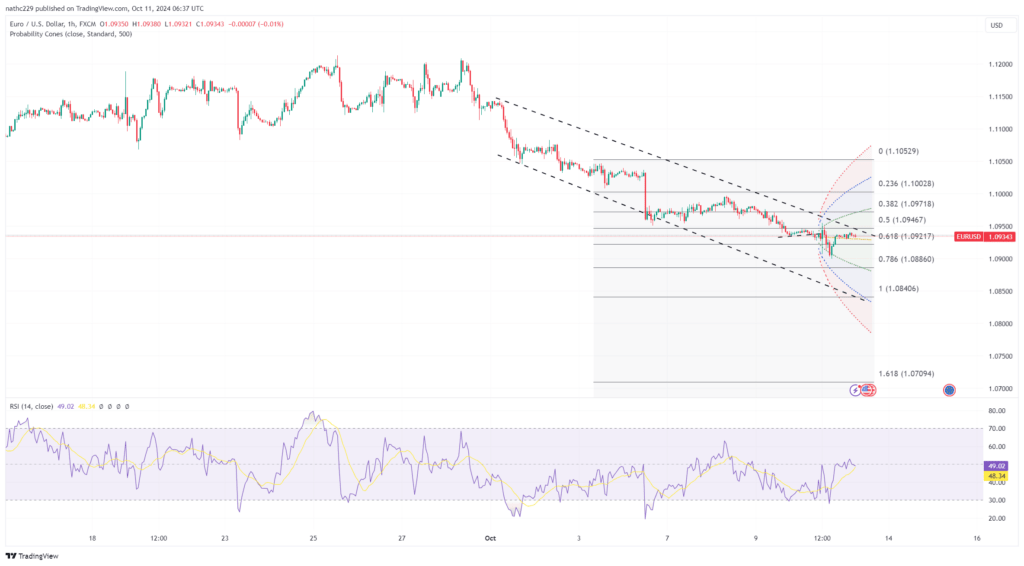
EUR/USD continued to decline, reaching a fresh two-month low as U.S. inflation concerns took center stage, outweighing the impact of tighter German-U.S. yield spreads. The pair opened near 1.0940 in New York trading but slid lower ahead of the release of U.S. September CPI and weekly jobless claims reports. Initial market reaction saw EUR/USD fall to 1.0909 on the EBS platform as higher-than-expected jobless claims temporarily pressured U.S. yields and the dollar lower. However, stronger-than-expected CPI readings reignited fears that inflation could be making a comeback, prompting a reversal that saw yields and the dollar climb. EUR/USD’s brief rally to 1.0955 was quickly erased, with the pair resuming its broader downtrend and closing near 1.0900.
Technically, EUR/USD remains firmly in bearish territory, with the pair trading below key support levels. It has broken through the daily Ichimoku cloud base and is now below the 5-day moving average, signaling continued downward momentum. The daily and monthly Relative Strength Index (RSI) readings are declining, indicating that the pair is not yet oversold, which leaves room for further declines. The failure to hold gains above 1.0950 and the break below the 1.0900 level highlight the prevailing bearish sentiment. Traders are now eyeing key support in the 1.0775-1.0800 range, which could come into play if U.S. inflation data remains strong and investors further discount the probability of Fed rate cuts.
Looking ahead, Friday’s U.S. September Producer Price Index (PPI) and October University of Michigan consumer inflation expectations are critical for EUR/USD. An upside surprise in PPI or a rise in consumer inflation expectations could bolster the view that inflation pressures persist, leading to higher yields and a stronger dollar. This would likely add to the downside pressure on EUR/USD, pushing the pair toward the key 1.0775-1.0800 support zone. Additionally, a slew of Fed speakers could provide further clues on the central bank’s stance, with any hints of a less dovish outlook likely to drive EUR/USD lower. On the other hand, any signs of softer inflation could offer temporary relief for the euro, but the broader bearish trend remains intact as long as the pair stays below the daily cloud base and key moving averages.
